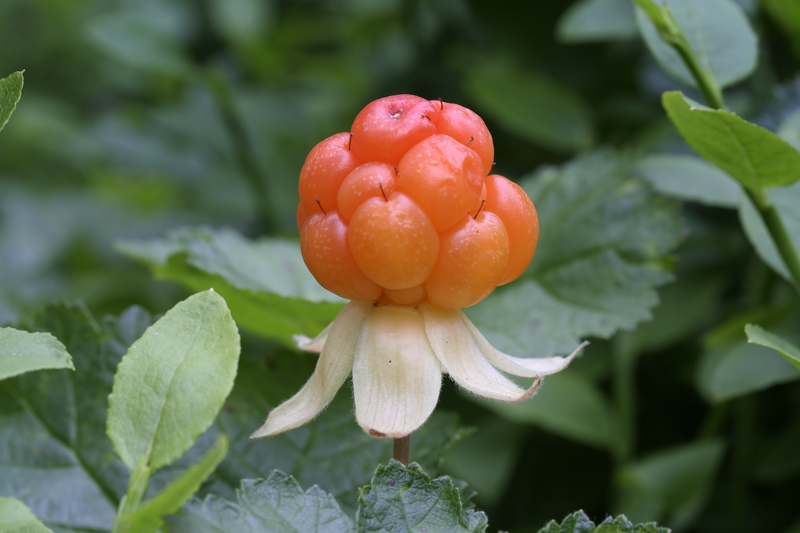
Cloudberry
Cloudberries have a somewhat sour taste to them, and they’re high in vitamin C. When the berries are ripe, they’re a salmon colour, with long stems and broad leaves with five lobes. Unripe berries will be hard and more of a red colour. Cloudberries can be found in peat bogs and peat forests.
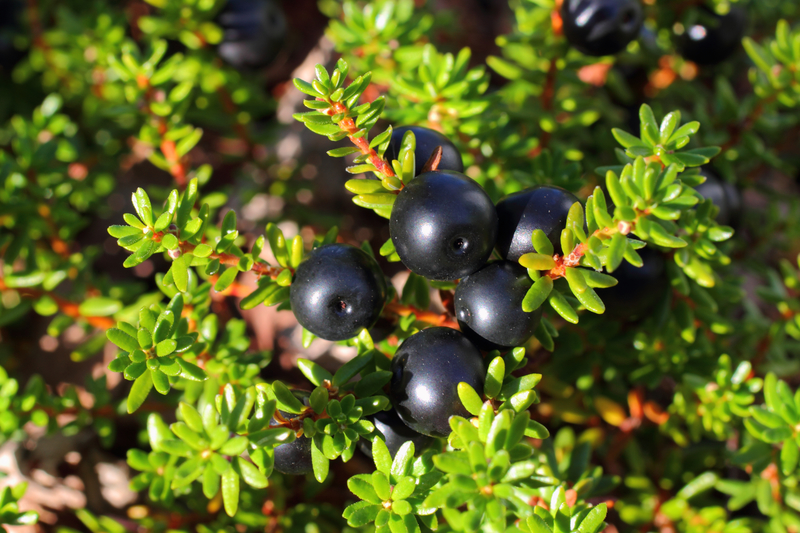
Crowberry
The crowberry looks similar to a blueberry, and it has a glossy black colour on the outside and the berries are about a third-of-an-inch in size. These berries are modest in flavour, but that flavour will intensify as you cook them or with freezing. You’ll find crowberries in shady, dry areas, muskeg and forests.
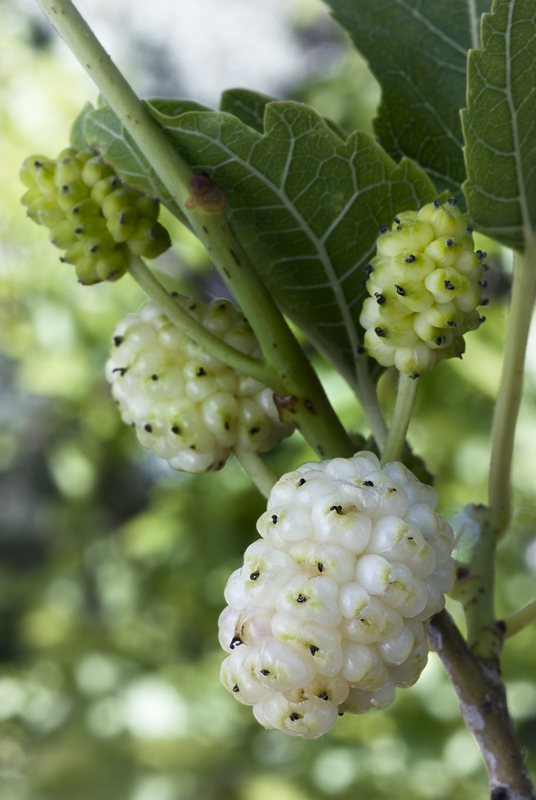
White mulberry
Mulberries are a wonderful fruit for picking and eating, or you can bake with them. The berries are juicy and sweet, and they ripen around midsummer. In BC, you’ll find white mulberries and they grow on a bush or small tree.
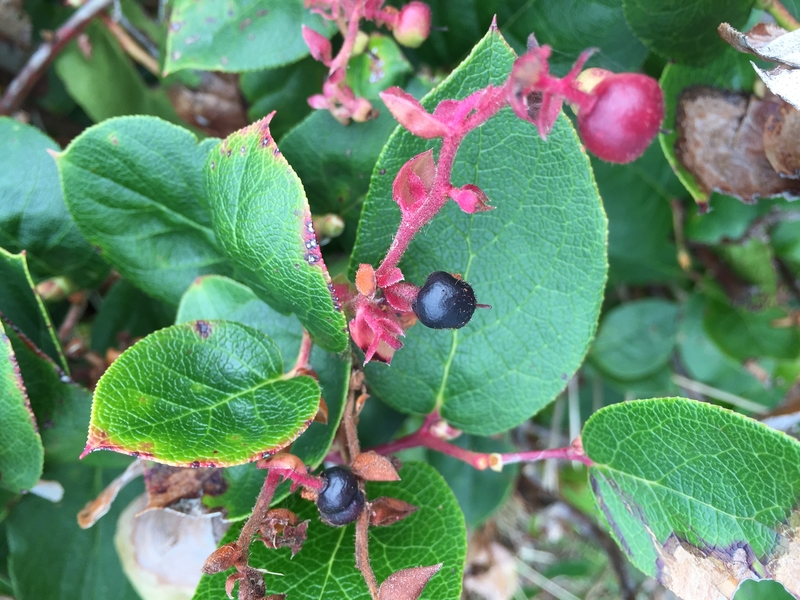
Salal
As you get closer to the coast, you’ll find more salal. These berries have a mild, sweet flavour, and they’re good for drying. You’ll often find salal in thickets.
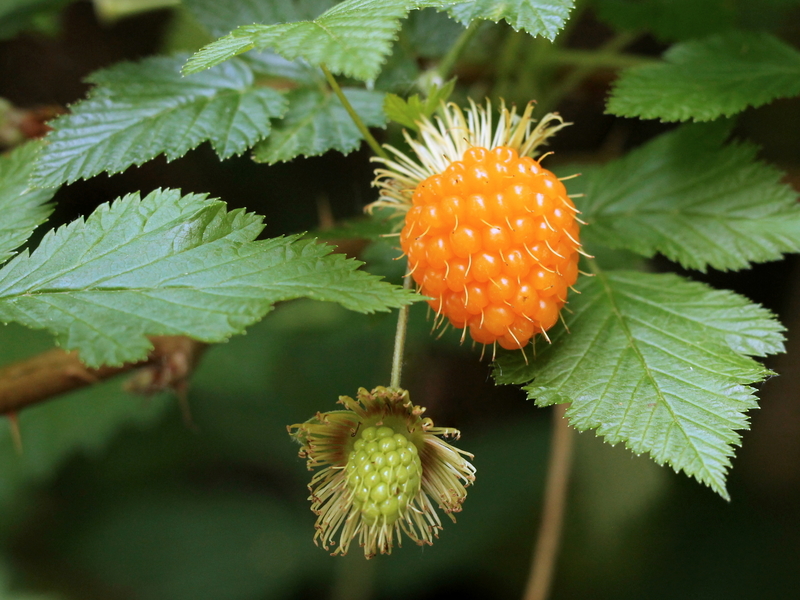
Salmonberry
Growing in wet, coastal forests, the salmonberry is right at home in BC. The ripe berries are a yellow-red colour with a mild, sweet flavour. Even the young shoots of this plant are edible, making them a top pick for survivalists.
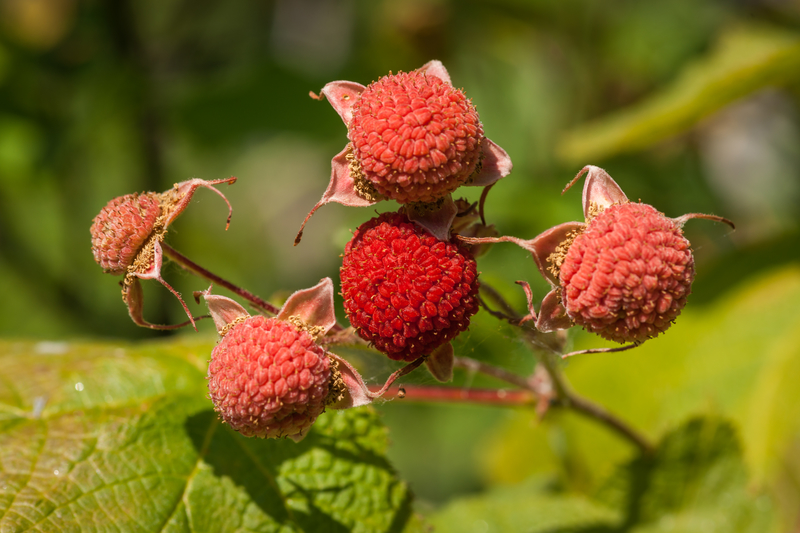
Thimbleberry
With no thorns, the thimbleberry is easy to find and pick, and it provides a nice flavour. This berry grows in the foothills and mountain regions, and even the young shoots can be peeled and eaten raw.
Next time you’re out camping or hiking, see if you can find some delicious berries to add to your dinner plate.
This article was originally featured on BCMag.com on May 2nd, 2019.




